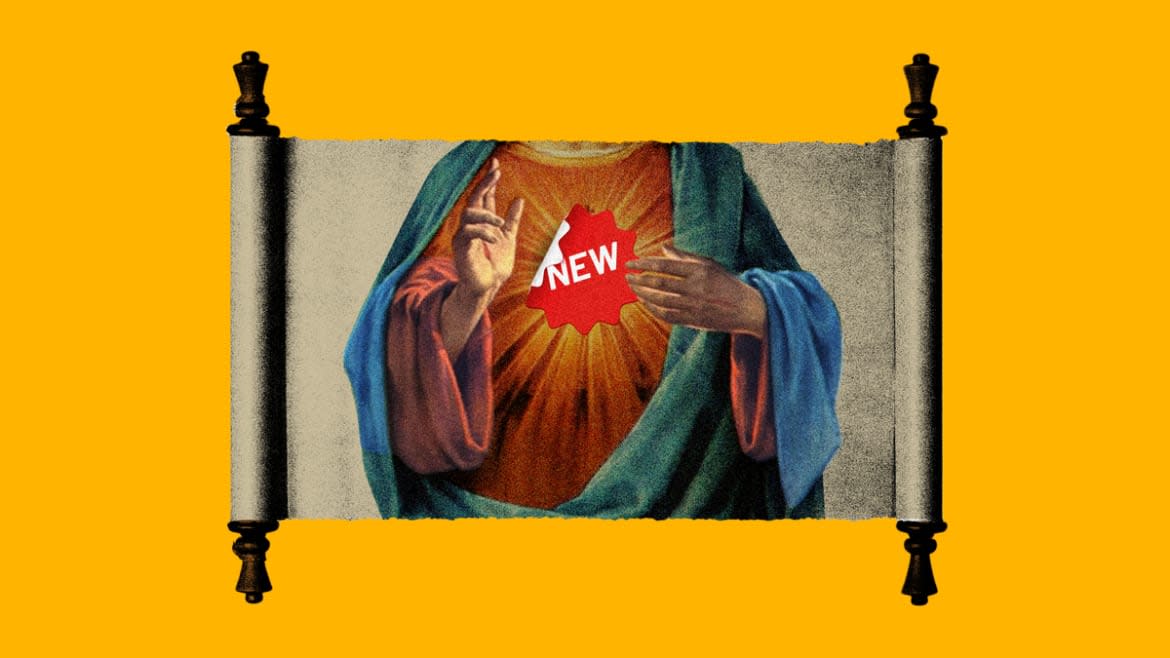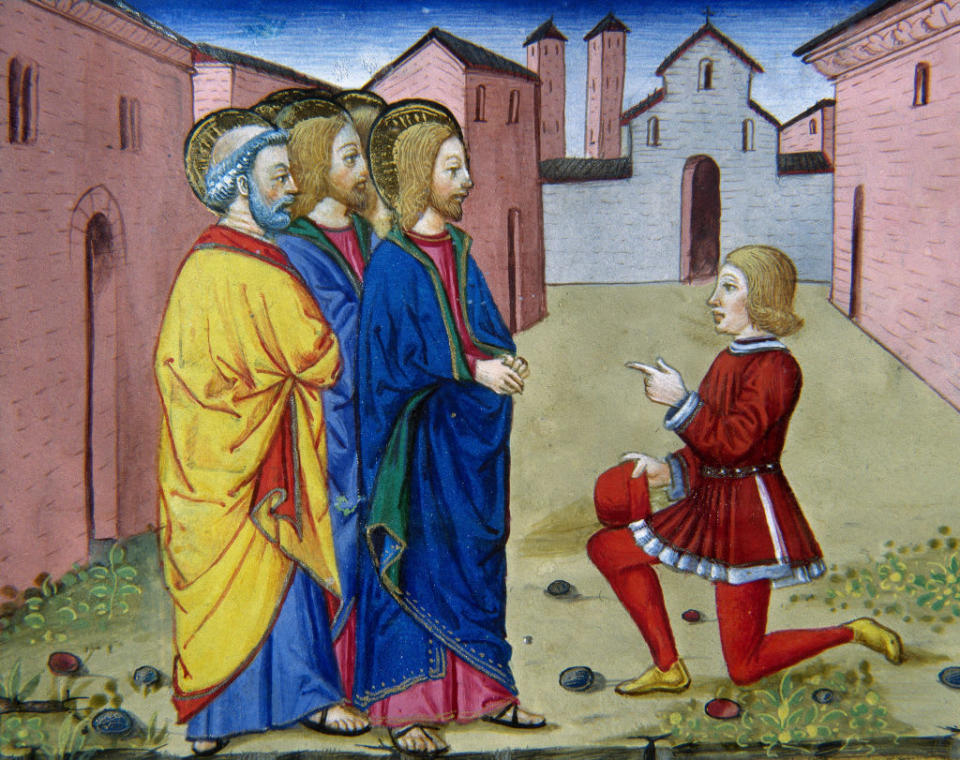Scholars Publish New Papyrus With Early Sayings of Jesus

For all of Christianity’s influence today, the archeological evidence for the first two centuries of the religion’s existence is notoriously thin. This is why the publication of a previously unknown second-century fragment of early Christian writing this week is so significant.
Written before the formation of a New Testament or even the widespread recognition of a collection of Christian sacred scripture, this fragmentary page from a small ancient book offers a rare glimpse into the minds of early Christians. The contents show that, much like us, early Christians were plagued by life’s worries.
The fragment is part of the Oxyrhynchus collection, a cache of over a half million fragments of papyri that were excavated over a century ago in ancient trash heaps in Egypt. They were uncovered by renowned classical scholars Grenfell and Hunt and a large team of local Egyptian laborers.
Since the cache’s discovery in the late nineteenth century, the Egypt Exploration Society (EES) and generations of papyrologists have been engaged in the painstaking work of identifying, editing, and publishing the fragments. The papyri shed light on every aspect of ancient life—commerce, friendship, lawsuits, romantic relationships, and shopping habits—and also transmit works by ancient authors that had previously been lost in the sands of time. Among them were a number of early Christian texts, some of them previously known and others—like this new example—that were previously undiscovered.
For an artifact that was only published this week, the fragment (or, better, fragments as it was pieced together from two separate parts by papyrologist Ben Henry) has an unusual history. Sometime during the 1960s-1980s the papyrus fragment was cataloged and photographed in Oxford. In 2010 one section was sold to Hobby Lobby, Inc. by former University of Oxford faculty member and MacArthur-winning scholar Dirk Obbink. Museum of the Bible (MOTB)—the museum established by the Green family, the owners of Hobby Lobby—returned the papyrus to the EES in 2019 after a joint investigation confirmed that it belonged to the EES. In 2020 Obbink was arrested on suspicion of theft by the Thames Valley Police. Hobby Lobby is currently suing Obbink, claiming that 32 pieces he sold to them were stolen. Obbink has denied all wrongdoing. This history means that the three editors of the fragment, who worked on it for many years when it was in possession of Hobby Lobby/MOTB, all have had ties to Museum of the Bible. (This is not to suggest that they are unqualified for the position, they are highly qualified papyrologists and textual critics.)
The significance of the fragment lies in its date and contents. In conjunction with distinguished papyrologist and paleographer Ben Henry, the editors—Jeffrey Fish, Daniel Wallace, and Michael Holmes—date the fragment to the second century CE. This is important because, as Dr. Fish told me, “Only a few gospel papyri can be securely dated to the second or beginning of the third century.” This is the earliest period from which we have Christian manuscripts. “What is so significant about this papyrus,” continued Fish, “is that it contains sayings of Jesus which correspond partly to canonical gospels (Matthew and Luke) and partly to sayings we know only from the Gospel of Thomas. It is as early or earlier than any of our papyri of the Gospel of Thomas [our earliest non-canonical Gospel],” including other fragments of the Gospel of Thomas found at Oxyrhynchus.
Dating manuscripts is a challenge. Because the papyri were found in a trash heap the archaeological context is of limited value for determining a date. Instead, the date is ascertained by comparing the handwriting of the fragment (paleography) with that of other manuscripts. In this case, Fish told me, the new papyrus was compared to two dated documents and to another non-canonical manuscript (LX 4009). The other non-canonical Christian manuscript, which was edited by a different team including the renowned papyrologist Peter Parsons, was tentatively dated to the second century. The date, Holmes told me, is “as secure as the limitations of paleography allow.” Other scholars will be sure to weigh in on the reliability of this date, but any second-century Christian manuscript is priceless.
Then there are the contents of the papyrus. Although the fragment does not include the phrase “Jesus said,” it appears to be a collection of sayings attributed to Jesus. As the fragment is so short, it is difficult to determine exactly what kind of text it was. There is no narrative content, but the fragment might have been part of a previously unknown Gospel or instead part of a text by an early Christian writer that quoted sayings of Jesus. To support the second possibility, there are similarities with a text written by the second-century Christian philosopher Justin Martyr. Taking the most historically cautious approach, the editors of the fragment have wisely titled it “Sayings of Jesus.”
For historians investigating both what the historical Jesus said and how early Christians wrote their Gospels, the fragment brims with promise. For those interested in Jesus’s words, it represents an intriguing new resource. There is a scholarly consensus that stories about Jesus and the memories of what he said circulated orally for decades among his followers. For several centuries, scholars have speculated that when people first began to commit these words to paper, they collected his sayings together first. We have an example of this kind of collection in the Gospel of Thomas, which is one reason that some scholars date the Gospel of Thomas so early. It is clear from reading the canonical Gospels that Matthew (ca. 80-90 C.E.) and Luke (ca. 80-120 C.E.) shared written material. All scholars agree that they had copies of Mark (ca. 70 C.E.) and many speculate that they also had another source comprised almost entirely of sayings that is enigmatically called Q. (It’s a hypothetical document, we don’t have any copies of it.)
When I asked Jeffrey Fish and Michael Holmes if they had discovered Q, they were clear that they had not. “Q,” said Holmes “is commonly defined as material deriving from Matthew and Luke.” This fragment also includes sections shared with the Gospels of Thomas and departs from Matthew and Luke in small but important ways. It is, however, a sayings source. Fish tentatively raised the possibility that it may represent material used by the author of the Gospel of Thomas and, thus, present another line of early Christian thought and written tradition.

In a painting by Cristoforo de Predis, a young man asks Jesus how eternal life is obtained.
What is certain is that this text was at least partly concerned with the problem of worries of the world, or as ancient philosophers would put it, the care of the soul. The contents parallel passages of both canonical and non-canonical Gospels around this theme: specifically, an instruction not to worry about your life, food, or clothing (Matthew 6:25; Luke 12:22; Gospel of Thomas 27; 36); to emulate birds and their lack of cares (portions of Matt. 6:26–33; Luke 12:24–29); and a saying in the Gospel of Thomas that cautions people that even a rich man who amassed wealth still met death (saying 63). You cannot plan your way out of mortality. All life, like grass “is dried up and thrown in the oven” in the end.
Some of the divergences are not just errors or variations in wording but may represent choices about important issues like human anthropology. Fish told me that while Matthew and Luke have Jesus say that “life is more than nourishment and the body more than clothing,” the author of this fragment omits that section. They instead warn people what will happen if they do not abandon their preoccupation with worldly affairs.
In writing on this topic, the author of the fragment has drawn together material that is also found in at least three other Christian Gospels. This kind of writing and variation in language, said Holmes, “is not uncommon in 2nd century material. It “reminds us,” he added, “that traditions about Jesus continued to circulate in oral form long after the appearance of written gospels.”
An alternative view might see the fragment as evidence of early Christian reading and writing practices. Some early Christians seem to have been engaged in thematic excerpting and reorganizing of material from the Gospels. Why would they do this? Perhaps as a form of entertainment, perhaps to display their intellectual chops, or perhaps as a mental or spiritual exercise. A recent academic article by Jeremiah Coogan and Jacob Rodriguez argues that some early Christians saw parallel passages in the Gospels as equivalent and perhaps interchangeable. In this case, the differences between Gospels—including a now non-canonical gospel—may not have been that important. In a world without Google search inside, synthesizing disparate thematic material was important. When it came to excerpting and copying sayings of Jesus, readers might organize sayings from multiple sources in the same mental space—in this case the category of “worry.”
All of this suggests that early Christians valued written texts about Jesus’s words and deeds but were not hung up on the details in the way that some modern readers are. The author of this fragment could combine different traditions about Jesus and produce a new version of his sayings with limited concern about the precise wording of earlier texts. Scholars observe the same thing in how Matthew and Luke use their sources.
What clearly was important to the author of this fragment was the problem of life’s pressures. This wasn’t just a Christian preoccupation. Worry (we might be tempted to call this anxiety) was a source of perennial concern. Worrying about things, ancient Stoics and Epicureans agreed, was harmful to the soul. Think too much about making money, the philosopher Philodemus wrote in his Property Management, and you can sustain permanent psychic injury. Many of the ancient philosophical texts that are cited by contemporary Stoics like Ryan Holiday concern how to separate oneself from worldly affairs and remain unaffected by the undeniable stresses of existence.
Guidance like that of Philodemus, the canonical Gospels, and this new fragment speak to the pressures of ancient existence. Many people lived with the constant stress of uncertainties about the future. In a world where many lived paycheck to paycheck, depended upon stable weather and good harvests for income, and sought work as laborers during the agricultural off-season, life was hard. Even for the wealthy, ancient medical writers reveal, it was easy to get caught up in the cycle of obsessively hoarding and seeking out more wealth. It was exhausting and anxiety-inducing.
Although there is much that is still unknown about this new fragment, one thing seems sure: When it comes to life’s pressures, early Christians weren’t that different from us.
Get the Daily Beast's biggest scoops and scandals delivered right to your inbox. Sign up now.
Stay informed and gain unlimited access to the Daily Beast's unmatched reporting. Subscribe now.

 Yahoo News
Yahoo News 
